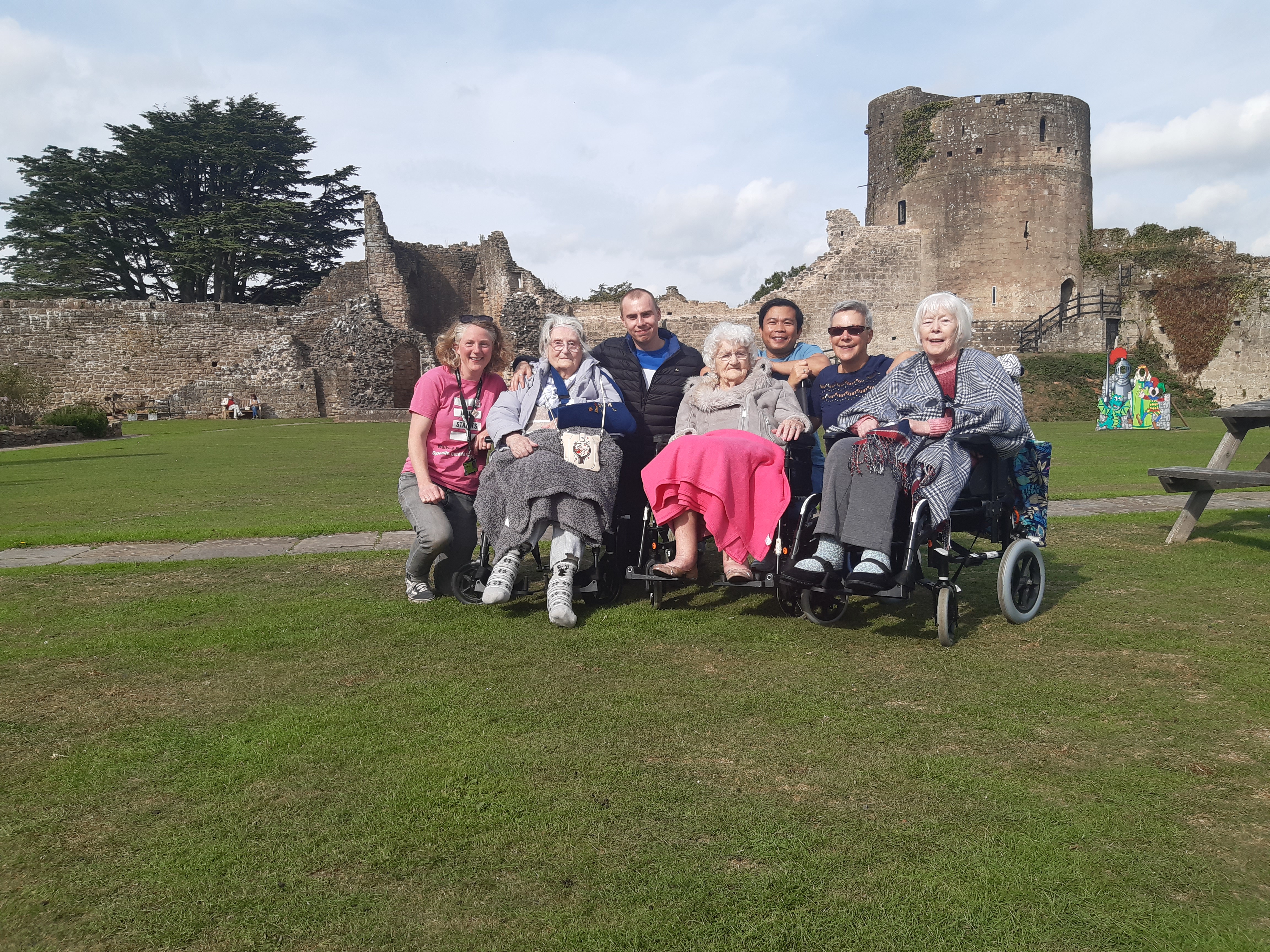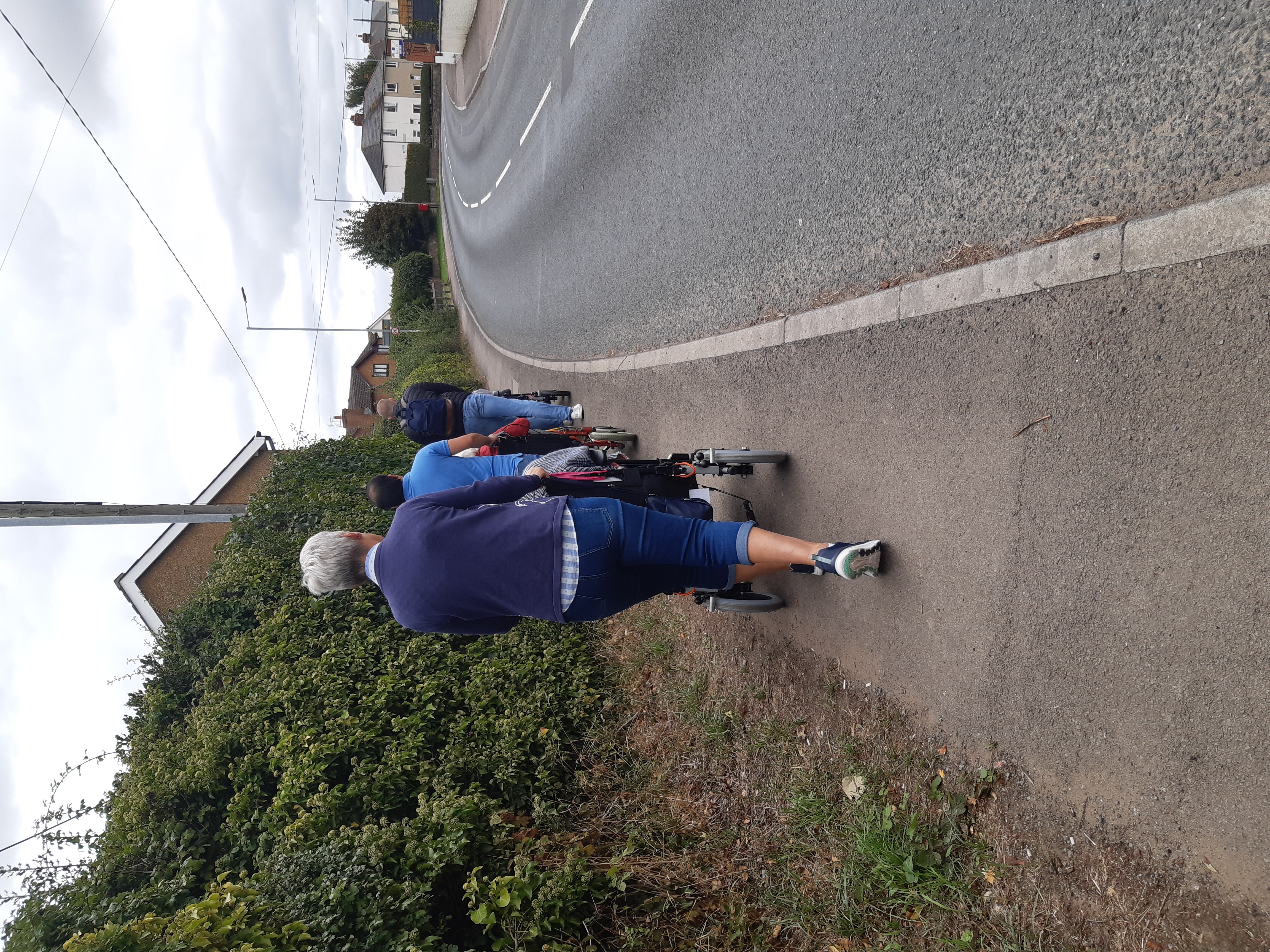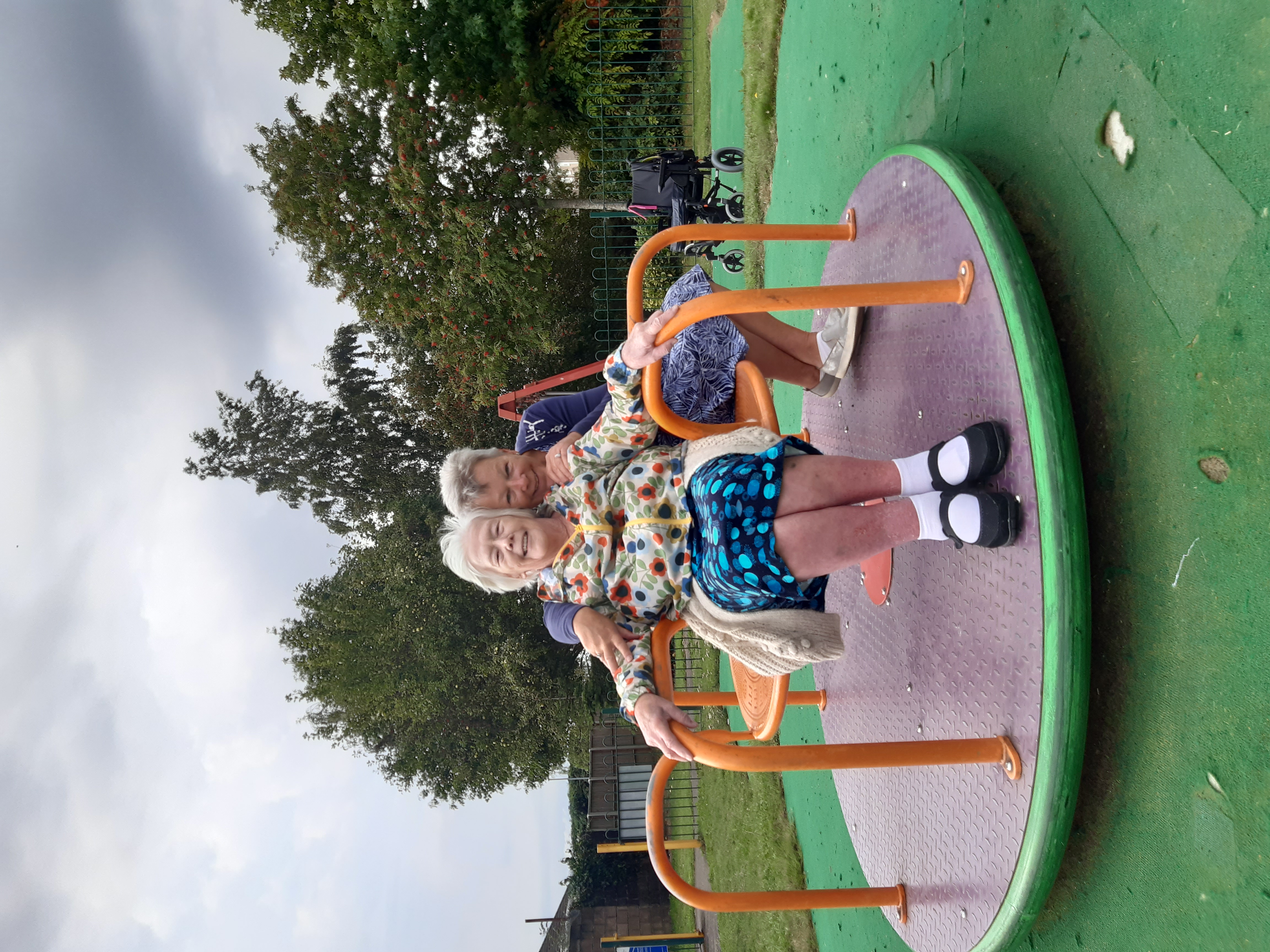Older adults enjoy the benefits of walking
Most of us are aware of the importance of regular exercise but it’s not always easy for everyone to do. Many older adults in Wales are physically inactive, or at risk of becoming so, which can increase social isolation, reduce independence and diminish physical health and fitness.
It doesn’t help that narrow footways, inappropriate speed limits and cars parked on pavements can all impact on our ability to exercise safely.
Laura Service, Project Coordinator for Living Streets, tells us about a project working with older people in south Wales to enjoy the benefits of walking.


As part of the UK charity for everyday walking, Living Streets Cymru has worked with people aged over 50 in south east Wales to help them increase their walking activity. Walking Friends Wales was a four-year project, funded by the Healthy & Active Fund, a partnership between Welsh Government, Sport Wales and Public Health Wales.
Participants in the project got the chance to meet other people, walk at their own pace, and experience the benefits associated with regular movement and exercise. Walking for just 20 minutes a day has been shown to reduce the risk of a number of preventable health conditions, including certain cancers, depression, heart disease and Type 2 diabetes. And walking together can also help us feel happier and healthier, with active people who walk with friends or family reporting higher levels of mental wellbeing.
The Walking Friends Wales project included led walks, walk leader training and Community Street Audits where we work with communities to hear what works well for walking and what could be improved. They’re a great way for people to voice the need for changes to their local walking environment, like a new pedestrian crossing that will help them get around more safely.
In Caldicot, Living Streets Cymru worked with residents from a local retirement home, many of whom used wheelchairs and other mobility aids. The weekly sessions provided residents with opportunities to be physically active and to get out and about to meet people.
Some of our participants are first time users of wheelchairs so we’ve been able to have conversations about how they feel using them and what their experience is like. This also became important when we organised the Community Street Audit together.
The walks sparked conversations and laughter, alongside the more serious challenges they face. We designed the walks together each week and each week went for longer visits, finally making it to Caldicot Castle on the last walk. Stories from the walk were shared with other residents who were not able to attend the walk with us.
The walks are fun. Different every time. It’s so nice to have company. Just to come out in the fresh air and feel part of everyday living.
I often reflect back to why are we doing this? This walk gave the participants choice. Choosing to go on a walk, choosing to join a group, choosing an ice lolly, choosing to get on a merry-go-round or choosing to buy a greeting card to send to someone. Discovering that they can sit on or by the bench with others, eat an ice cream in the sun, chat with others visiting the shop, and seeing friendly people out and about. In short, they are enjoying themselves. What can seem like a mundane visit to a shop or park has made this group feel connected with the world around them.
Mary, one of the residents, told me how much she enjoyed being involved with Walking Friends Wales.
“We call ourselves the kerb crawlers because we’re investigating the ways you can access different roads and pavements and safe places to walk. Wheelchair access isn’t always available – and when it is, it’s so high to get down and up. It’s difficult. And all the trees are in the way – and bushes too.
“The walks are fun. Different every time. It’s so nice to have company. Just to come out in the fresh air and feel part of everyday living.”

Walking is great exercise for everyone and is an ideal activity if you’re less fit or have physical limitations.
- Walking improves heart health.
- Walking uses large muscles that help control blood sugar and make it less likely that you will get diabetes.
- If you have diabetes, then walking helps prevent many of the complications.
- Walking can help with lower back pain, as it keeps your back muscles from becoming weak through inactivity. Walking has been shown to reduce pain and increase function more than most medication.
- Walking is a low-impact activity, so it strengthens your bones, keeps your joints healthy and can help to prevent the onset of osteoporosis.
Walking isn't just good for our bodies; it can be really beneficial to our mental health and wellbeing, too...
- Walking can improve self-worth, mood and have a positive impact on self-esteem.
- It can also reduce anxiety and depression, and the risk of dementia.
- Getting out and about keeps many people connected with their communities.
Exercising with a friend is fun, helps you make new friends and develops the friendships you already have. - Brisk walking boosts endorphins, which can reduce stress hormones and alleviate mild depression.
- Walking outdoors has a positive effect on the brain and helps to reduce stress, particularly when walking past trees and plants.
